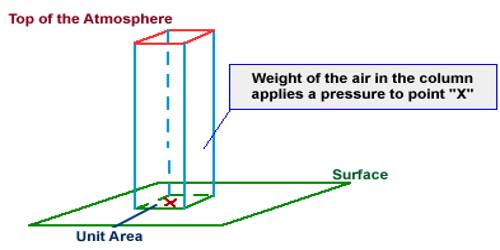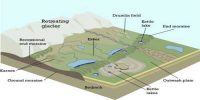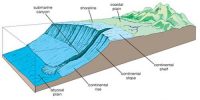Atmospheric Pressure
Do you realize that our body is subjected to a lot of air pressure? As one moves up the air gets verified and one feels breathless.
Atmospheric pressure, also called barometric pressure, force per unit area exerted by an atmospheric column. Atmospheric pressure can be measured with a mercury barometer, which indicates the height of a column of mercury that exactly balances the weight of the column of atmosphere over the barometer. The standard atmosphere (symbol: atm) is a unit of pressure defined as 101325 Pa (1.01325 bar), equivalent to 760 mmHg (torr), 29.92 inHg and 14.696 psi. Atmospheric pressure is caused by the weight of the atmosphere pushing down on itself and on the surface below it.
The weight of a column of air contained in a unit area from the mean sea level to the top of the atmosphere is called the atmospheric pressure. The atmospheric pressure is expressed in units of mb and Pascals. The widely used unit is kilo Pascal written as hPa. At sea level, the average atmospheric pressure is 1,013.2 mb or 1,013.2 hPa. Due to gravity, the air at the surface is denser and hence has higher pressure. Air pressure is measured with the help of a mercury barometer or the aneroid barometer. The pressure decreases with height. At any elevation, it varies from place to place and its variation is the primary cause of air motion, i.e. wind which moves from high-pressure areas to low-pressure areas.
At sea level, atmospheric pressure has an average value of one atmosphere and gradually decreases as altitude increases. Also called barometric pressure.














